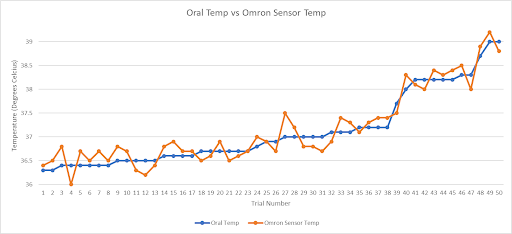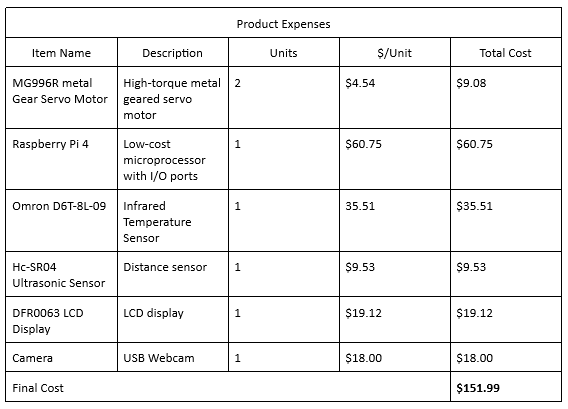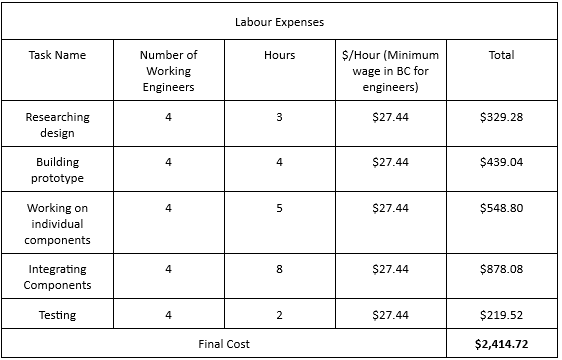Results
Temperature Sensor Testing
To calibrate and test the sensor we did 50 trials total on 4 different people at a distance of 30 cm away from the thermometer.
The method for testing was to gather a baseline temperature using a standard oral thermometer; the Physio Logic Acuflex thermometer
which claims to have an accuracy of ±0.1°C. After an oral reading was gathered and immediate reading from the Omron sensor was taken.
The way a final temperature value is taken by the Omron sensor is that 10 readings are taken and then averaged to get the final value.
Any obvious outlier temperate readings (35°C < T < 41°C) are discarded in this averaging process to increase accuracy.
These values were chosen as anything less than 35°C is considered hypothermic and anything greater than 41°C is considered a
medical emergency and a person with these temperatures would not be able to walk around. To simulate fever-like temperatures,
(38℃ and above) a rag soaked in hot water was placed on the test subjects forehead for 30 seconds, the temperature of the rag was
taken using the oral thermometer then an experimental value was gathered using the A.T.T.
Here is a short video that showcases what the camera sees and tracks to help find the temperature.
A graph of the real temp vs the measured temp is shown here:

Cost Analysis


Based on the data presented in the tables, the total cost of purchasing all of the components amounts to $152. By selling each unit for
$303.99 at a 50% profit margin, a total of 16 units need to be sold to break even from the labor costs. In the case of a successful business
model, this device holds potential across various industries, including travel and entertainment. With 1500 units sold, the projected return
on investment would be an impressive $225,568.00.
To further economize, strategic measures can be implemented. For instance, opting for more
cost-effective components could substantially reduce expenses. Specifically, identifying economical alternatives to the Raspberry Pi can lead
to significant savings. Moreover, taking advantage of bulk purchasing offers discounts, further contributing to cost reduction.
